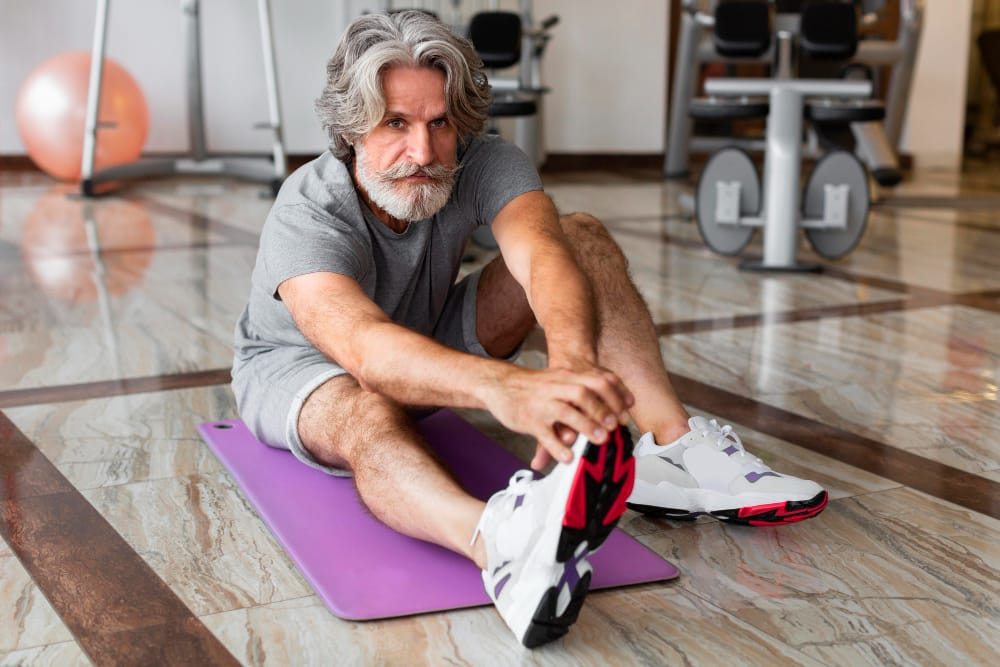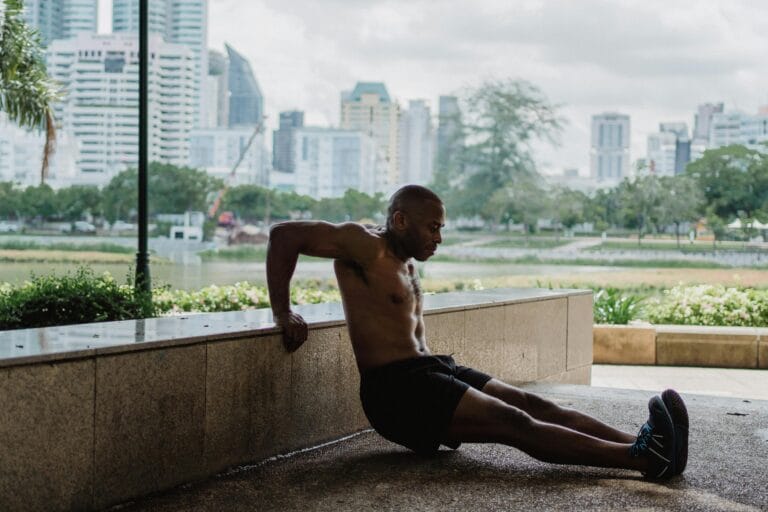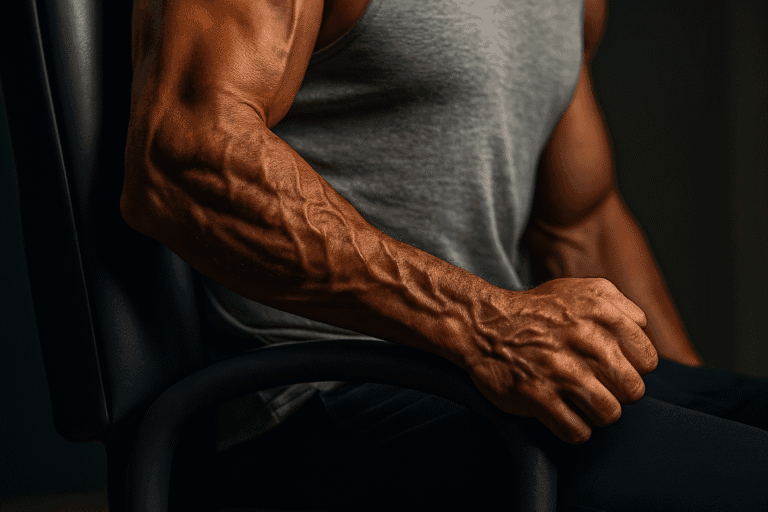FREE SHIPPING OVER $50
Want to Stay Lean and Limber After 40? Do These 5 Exercises Every Day

You’ve probably noticed it: that feeling of your body changing. The metabolism that once felt like a furnace now seems to be running on low. A simple stretch that you used to do without thinking now feels stiff and achy. The weight you once shed with ease seems to cling to you no matter what you do. For many of us, turning 40 marks a new and often frustrating chapter in our relationship with our bodies. It feels like the clock has sped up, and the slow, gradual changes of a decade suddenly feel very real and very present.
But what if you could press the pause button on these changes? What if you could not only maintain your body but also improve it, feeling stronger and more energetic than you did in your 30s? The secret isn’t a complex, time-consuming workout plan or an expensive gym membership. It’s about a few minutes of intentional, daily movement. It’s about doing a handful of exercises that are so fundamental and powerful they can counteract the effects of aging and help you stay lean and limber after 40.
Why Your Body Changes After 40: The Science of “Staying Young”
To truly understand the solution, you have to understand the problem. The challenges we face with our bodies after 40 aren’t just in our heads; they are based on a few key physiological changes.
- Metabolic Slowdown: This is one of the most significant changes. As we age, we naturally begin to lose muscle mass, a process known as sarcopenia. Since muscle tissue is more metabolically active than fat tissue, this loss means our resting metabolism slows down. This makes it easier to gain weight and much harder to lose it.
- Loss of Mobility and Flexibility: As the years go on, a sedentary lifestyle and a lack of movement can lead to a gradual shortening of our muscles and a stiffening of our joints. This reduces our range of motion, making us feel less limber and increasing our risk of injury from everyday activities.
- Bone Density and Strength: Both men and women experience a decline in bone density, and our overall strength can begin to wane. This makes it crucial to engage in activities that put healthy stress on our bones and muscles to keep them strong.
The 5 Exercises That Will Help You Stay Lean and Limber
This isn’t just a random collection of movements. Each of these five exercises was chosen for its ability to target the specific issues we just discussed. They are a potent combination of strength, mobility, and cardiovascular health.
1. Bodyweight Squats
The squat is a foundational movement pattern that we all perform in our daily lives—getting up from a chair, bending down to pick something up, etc. As an exercise, it is a powerhouse for staying lean and limber.
- How to do it: Stand with your feet shoulder-width apart, toes pointing slightly outward. Brace your core, and with your chest up and back straight, slowly lower your hips as if you are sitting into a chair. Go as low as you can comfortably, keeping your heels on the ground. Drive back up to the starting position.
- Why it works: The squat is a full-body exercise that engages your glutes, hamstrings, quadriceps, and core. By building and maintaining muscle in these large muscle groups, you are directly fighting metabolic slowdown and keeping your body’s metabolism revved up. It also promotes joint mobility in your hips and knees, keeping you feeling limber.
2. The Plank
Core strength is the cornerstone of a healthy body, and the plank is one of the most effective ways to build it. A strong core supports your spine, improves your posture, and makes every other movement easier and safer.
- How to do it: Start in a push-up position, with your hands directly under your shoulders and your back straight. For a modification, lower yourself onto your forearms, keeping your body in a straight line from your head to your heels. Engage your core muscles by pulling your belly button towards your spine and squeezing your glutes.
- Why it works: The plank is a static hold that builds incredible core strength and endurance without putting any strain on your back. It helps to stabilize your pelvis and spine, directly counteracting the postural breakdown that often comes with age.
3. The Cat-Cow Stretch
This is a gentle but incredibly effective mobility exercise for your spine. Our spinal flexibility can diminish with age, leading to a feeling of stiffness. The Cat-Cow stretch helps to lubricate your spine and improve its range of motion.
- How to do it: Start on your hands and knees. Inhale as you drop your belly toward the floor, lifting your head and tailbone toward the ceiling (Cow position). Exhale as you round your back toward the ceiling, tucking your chin and tailbone (Cat position). Flow between these two movements with your breath.
- Why it works: This exercise actively stretches and strengthens the muscles that support your spine. It improves spinal mobility and can help relieve tension and stiffness in your back, making you feel significantly more limber.
4. Push-ups (or an Alternative)
A push-up is a powerful upper-body exercise that also engages the core and lower body. Building upper body strength is crucial for functional fitness and for maintaining your quality of life as you age.
- How to do it: Start in a plank position. Lower your body until your chest nearly touches the floor, keeping your elbows tucked in. Push back up to the starting position. If this is too difficult, a modified push-up from your knees or with your hands on an elevated surface (like a bench or table) is a great alternative.
- Why it works: Push-ups build strength in your chest, shoulders, and arms. This is crucial for everyday activities like carrying groceries or lifting objects. By maintaining this kind of functional strength, you can ensure you remain strong and independent well into your later years.
5. Jumping Jacks
While strength and mobility are crucial, a little cardio is essential for a truly holistic fitness routine. Jumping jacks are a simple, accessible way to get your heart rate up and burn calories, contributing to your goal to stay lean.
- How to do it: Stand with your feet together and arms at your sides. In one fluid motion, jump your feet out to the sides while raising your arms overhead. Jump back to the starting position. For a low-impact alternative, simply step one foot out to the side at a time while raising your arms.
- Why it works: This exercise is a fantastic way to boost your cardiovascular health and burn a significant number of calories in a short amount of time. It improves circulation and contributes directly to your goal of staying lean. It also helps to improve coordination and balance.
How to Weave These Exercises Into Your Daily Routine
The best exercise routine is the one you actually do. The beauty of these five exercises is that you can do them anywhere, with no equipment, in just a few minutes a day. Consistency is the key to seeing results, especially after 40.
- The 10-Minute Daily Circuit: A simple way to start is by creating a circuit. Do each exercise for 1 minute, and then rest for 30 seconds. Once you’ve completed all five, you can choose to repeat the circuit one or two more times, as your fitness level allows.
- The Power of Progression: As you get stronger and more limber, you can increase the challenge. For the squat, you can add weight. For the plank, you can hold it for longer. For the cardio, you can go faster. The goal is to consistently challenge your body so it continues to adapt and get stronger.
- Listen to Your Body: This is the most important piece of advice. If an exercise causes pain, stop. It’s okay to modify or rest. The goal is long-term health, not a single intense workout.
Final Thoughts
Getting older doesn’t have to mean a loss of vitality, strength, or mobility. It’s easy to fall into a passive role, letting our bodies dictate our actions. But you have the power to take control and shape your own future.
By dedicating just a few minutes a day to these five fundamental exercises, you can reverse the negative effects of aging and start to feel more energized, strong, and limber than you have in years. This simple fitness routine isn’t just about looking good—it’s about feeling great and enjoying a healthy, active life for decades to come.
Related Articles
- 3 Years of Back Pain Gone in 2 Weeks—Thanks to This Surprising Exercise
- Why These Baby Boomers Are More Ripped Than Gen Z—Their Anti-Aging Routine Will Blow Your Mind
- Doctor Shocked: The Simple Routine That Helped This 65-Year-Old Throw Away Her Cane
- The Doctor’s Secret: I Was 67, in Pain, and Ready to Quit… Then I Found These 15 Light Exercises
- No Heavy Weights Needed! A Physical Therapist’s Top 5 Pilates Moves for Glute Transformation



